April 30, 2024
Prelims Pointers
April 30, 2024
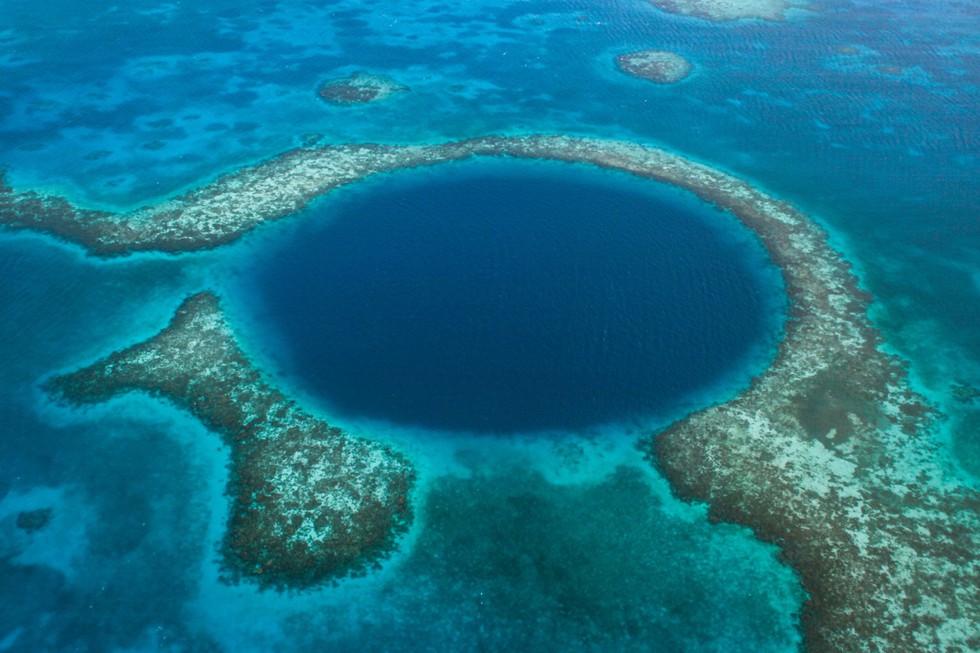
What is a Blue Hole?
- They are water-filled vertical caverns, or sinkholes, found in coastal regions where the bedrock is made of soluble material, such as limestone, marble, or gypsum.
- They form when water on the surface percolates through the rock, dissolving minerals and widening cracks, which eventually causes the rock to collapse.
- Famous examples include Dean's Blue Hole in the Bahamas, the Dahab Blue Hole in Egypt, and the Great Blue Hole in Belize.
About Taam Ja' Blue Hole:
- It is the deepest known underwater sinkhole in the world.
- It sits in Chetumal Bay off the southeast coast of the Yucatan Peninsula in Mexico.
- It is 390 feet (119 m) deeper than the previous record holder— the 990-foot-deep (301 m) Sansha Yongle Blue Hole, also known as the Dragon Hole, in the South China Sea.
- Spread over an area of 13,660 square meters, the giant, underwater cavern has been named Taam Ja’ which means "deep water" in Mayan.
- The submerged blue hole has a nearly circular shape at its surface with steep sides that form a large conic structure covered by biofilms, sediments, limestone, and gypsum ledges.
Key facts about Yucatan Peninsula:
- It is a northeastern projectionof Central America, extending into the Atlantic Ocean.
- The Gulf of Mexico lies on its western and northern sides. The Caribbean Sea lies on its eastern side. The northern part of Yucatán is in Mexico. Belize and a part of Guatemala are in the south.
- The peninsula is almost wholly composed of beds of coralline and porous limestone rocks.
Prelims Pointers
April 30, 2024
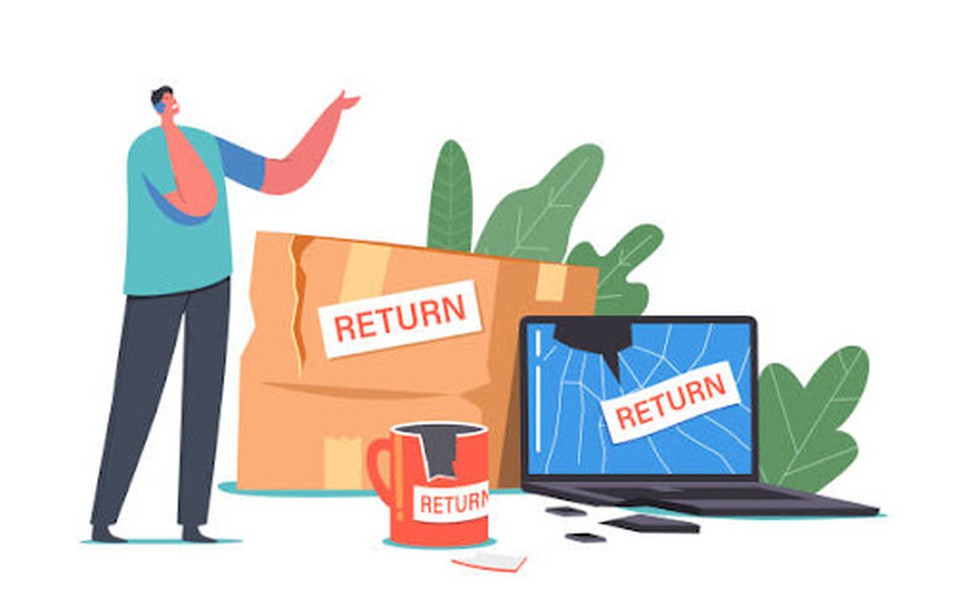
About Acceptance Sampling:
- It is a statistical measure used in quality control.It allows a company to determine the quality of a batch of products by selecting a specified number for testing.
- It tests a representative sampleof the product for defects. The quality of this designated sample will be viewed as the quality level for the entire group of products.
- The process involves first, determining the size of a product lot to be tested, then the number of products to be sampled and finally the number of defects acceptable within the sample batch.
- Products are chosen at random for sampling. It does not assure the quality of the complete set of products from which the sample is derived.
- Origin:
- Acceptance sampling in its modern industrial form dates from the early 1940s.
- It was popularized by Dodge and Romig and originally applied by the U.S. military to the testing of bullets during World War II.
- Need for Acceptance Sampling:
- A company cannot test every one of its products at all times.
- There may be too many to inspect at a reasonable cost or within a reasonable timeframe.
- Also, comprehensive testing might damage the product or make it unfit for sale in some way.
- Testing a small sample would be indicative without ruining the bulk of the product run.
Prelims Pointers
April 30, 2024
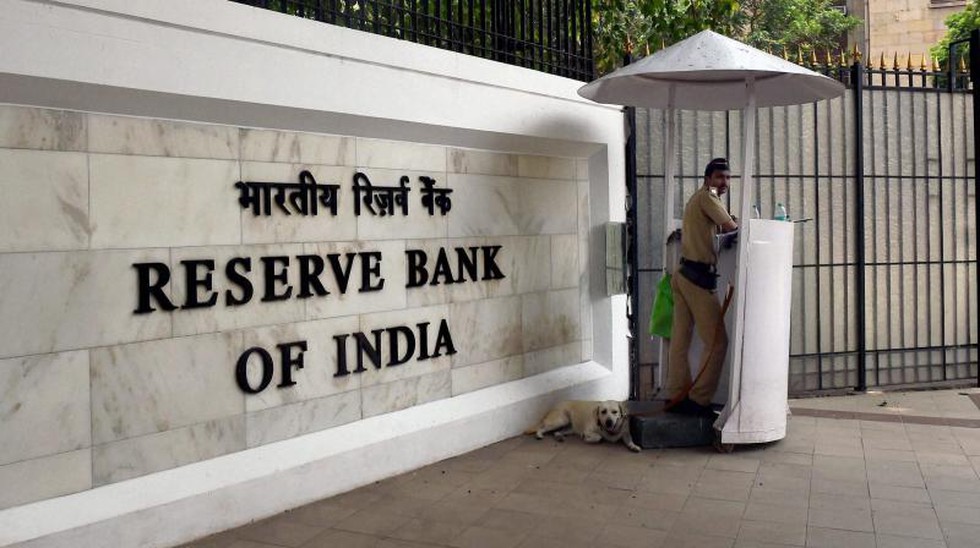
About 'Inflation Expectations Survey of Households' and 'Consumer Confidence Survey':
- They are launched by the Reserve Bank of India (RBI). They will provide useful inputs for the bi-monthly monetary policy.
- Inflation Expectations Survey of Households:
- It aims at capturing subjective assessments on price movements and inflation, based on their individual consumption baskets.
- This survey spans 19 cities, including Guwahati, Hyderabad, Jaipur, Kolkata, Lucknow, and Thiruvananthapuram.
- It seeks qualitative responses from households on price changes (general prices as well as prices of specific product groups) in the three months ahead as well as in the one-year ahead period.
- Additionally, it will collect quantitative data on current, three-month ahead, and one-year ahead inflation rates.
- Consumer Confidence Survey:
- It aims to gather qualitative responses from households regarding their views on the general economic situation, employment scenario, price levels, household income, and spending.
- This survey will also be conducted in 19 cities, including Ahmedabad, Bengaluru, Bhopal, Bhubaneswar, Chandigarh, Chennai, and Delhi.
Prelims Pointers
April 30, 2024
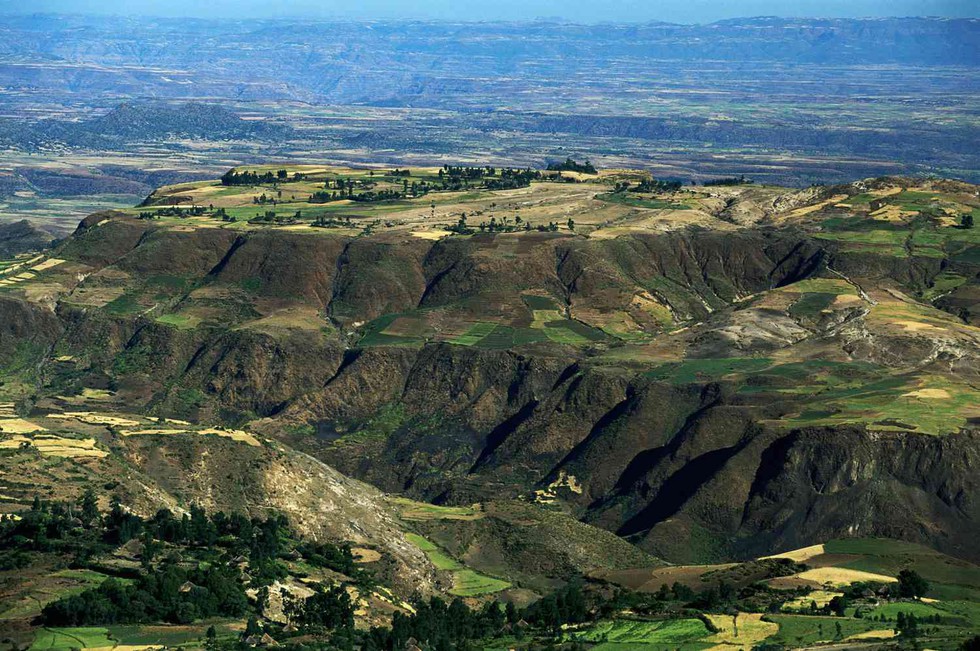
About Great Rift Valley:
- It is one of the most extensive rifts on Earth’s surface that runs along part of East Africa. It is part of a larger feature called the East African Rift System (EARS).
- It runs from Jordan in southwestern Asia to the coast of the Indian Ocean in central Mozambique.
- It runs across many countries: Eritrea, Djibouti, Ethiopia, Kenya, Tanzania, Uganda, Rwanda, Burundi, the Democratic Republic of the Congo (DRC), Malawi, Zambia, and Mozambique.
- Formation:
- The valley is situated in a region where three tectonic plates meet.
- It was formed about 40 million years ago when tectonic plates split and gave rise to the East African Rift.
- The area is geologically active and features volcanoes, hot springs, geysers and frequent earthquakes.
- A series of some thirty lakeslies along its length; the three largest in Africa are known as the Great Lakes and include Lake Tanganyika, the second deepest lake in the world, and Lake Victoria, the second-largest freshwater lake by surface area in the world.
- Many of Africa’s highest mountains—including Mount Kilimanjaro, Mount Kenya, and Mount Margherita—are in ranges fronting the Rift Valley.
What is a Rift Valley?
- A rift valley is a lowland region that forms where Earth’s tectonic plates move apart, or rift. They are found on land and at the bottom of the ocean, where they are created by the process of seafloor spreading.
- They differ from river valleysand glacial valleys in that they are created by tectonic activity and not the process of erosion.
Prelims Pointers
April 30, 2024

About the Paradox of Savings:
- It is also known as the paradox of thrift. It refers a rise in the savings rate of individuals can surprisingly cause a fall rather than a rise in the overall savings in an economy.
- This is in contrast to the general belief that a rise in individuals’ savings rates will cause a rise in overall savings in the economy. So even though savings may be good for an individual household, it is believed that it may not be good for the wider economy.
- The idea is part of the under-consumption theories of the business cycle, which attribute economic downturns to weak consumption and high savings.
- Origins of the theory:
- The concept was popularized by British economist John Maynard Keynes in his 1936 book, The General Theory of Employment, Interest and Money.
- Keynesian economists believe that higher savings is bad for the wider economy and that boosting consumer spending is the way to grow an economy.
- They argue that savings are invested by capitalists with the ultimate aim of selling their output in the form of final goods and services to consumers.
- So, if consumers fail to spend enough money on the output that capitalists bring to the market to sell, it can cause losses for capitalists and discourage further investment.
- On the other hand, a rise in consumer demand for final goods and services is expected to encourage people to save more and invest.
- Criticisms of the idea:
- Critics of the idea argue that saving more is not bad for the economy and that a fall in consumer spending does not actually cause a fall in investment.
- In fact, they argue that a fall in consumer spending leads to a rise in savings and investment.
- This is simply because any money that people don’t spend on consumer goods or hoard under their beds has to go towards their savings, which in turn gets invested.
- An increase in savings allows banks to lend more. This will make interest rates go down and lead to an increase in lending and, therefore, spending.
Prelims Pointers
April 30, 2024

About Salmonella:
- It is a group of bacteria that can cause gastrointestinal illness and fever called salmonellosis. It naturally lives in animals' intestines and can be found in their feces.
- The bacteria then spread to humans if they come in contact with salmonella-infected animals or items in their environment.
- It is a ubiquitous and hardy bacteria that can survive several weeks in a dry environment and several months in water.
- Risks associated with Salmonella:
- People infected with Salmonella might have diarrhea, fever, and stomach Some people—especially children younger than 5 years old, adults 65 years and older.
- People with weakened immune systems—may experience more severe illness that requires medical treatment or hospitalization.
Prelims Pointers
April 30, 2024
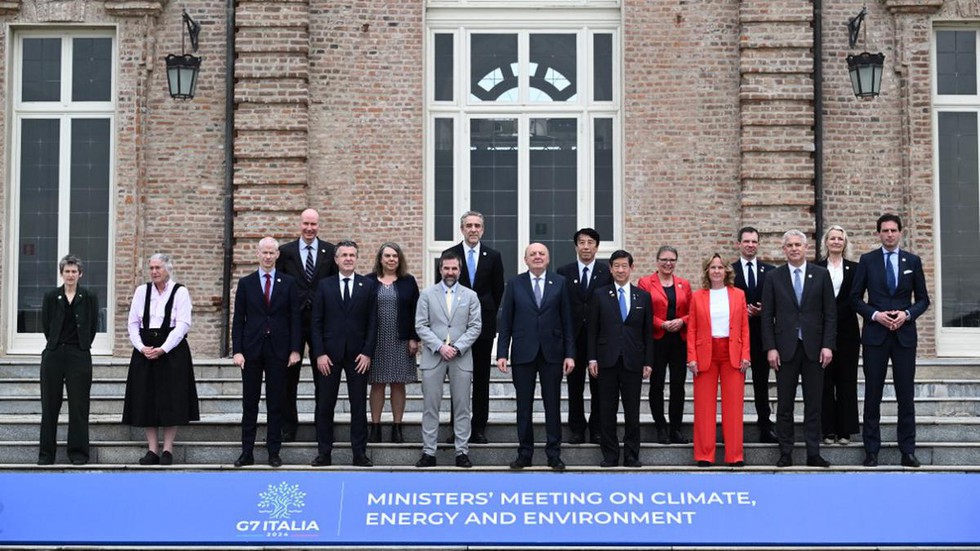
About G7:
- It is an intergovernmental organisationof leading industrialised nations formed in 1975. It meets annually to discuss issues such as global economic governance, international security, and energy policy.
- Member countries:Canada, France, Germany, Italy, Japan, the United Kingdom and the United State. Apart from the 7 member countries, the European Union (EU) has also participated fully in the G7 since 1981 as a “non-enumerated” member.
- Presidency: The host of the G7 summit, also known as the presidency, rotates annually among member countries. It was formerly referred to as the G-8 until Russia was suspended from the group in 2014 after annexing Crimea.
- Some of the key principles of the G7 include:
- Democracy: G7 countries promote democratic values and institutions, including free and fair elections, the rule of law, and the protection of individual rights and freedoms.
- Human rights: They support the protection and promotion of human rights around the world, including civil, political, economic, social, and cultural rights.
- Free and fair trade: They are committed to promoting international trade and investment based on open, transparent, and non-discriminatory rules.
- Environmental protection: They are committed to reducing greenhouse gas emissions, protecting biodiversity, and addressing other environmental challenges.
- Peace and security: They are committed to promoting international peace and security, and to preventing and resolving conflicts through diplomatic means.
Prelims Pointers
April 30, 2024

About Global Leaders Group on Antimicrobial Resistance:
- It consists of world leaders and experts from across sectors working together to accelerate political action on antimicrobial resistance (AMR).
- It performs an independent global advisory and advocacy role and works to maintain urgency, public support, political momentum and visibility of the AMR challenge on the global health and development agenda.
- Background:
- It was established in November 2020 following the recommendation of the Interagency Coordination Group (IACG) on Antimicrobial Resistance to strengthen global political momentum and leadership on AMR.
- The inaugural meeting of the Group took place in January 2021.
- Secretariat: The Quadripartite Joint Secretariat (QJS) on Antimicrobial Resistance, a joint effort by the Food and Agriculture Organization of the United Nations (FAO), the United Nations Environment Programme (UNEP), the World Health Organization (WHO) and the World Organisation for Animal Health (WOAH) provide secretariat support for the Group.
What is antimicrobial resistance (AMR)?
- It is the ability of bacteria and other microbes to resist the drugs used to inhibit or kill them.
- These microbes are sometimes referred to as ‘superbugs’ and are responsible for causing drug-resistant infections that are difficult to treat.
- Causes of AMR:
- AMR is a naturally occurring phenomenon, the main cause of resistance to antimicrobials is antimicrobial drug use.
- Current high usage of antimicrobial drugs in humans, animals and plants is leading to a concerning rise in drug-resistance and making infections harder to treat.
Prelims Pointers
April 30, 2024
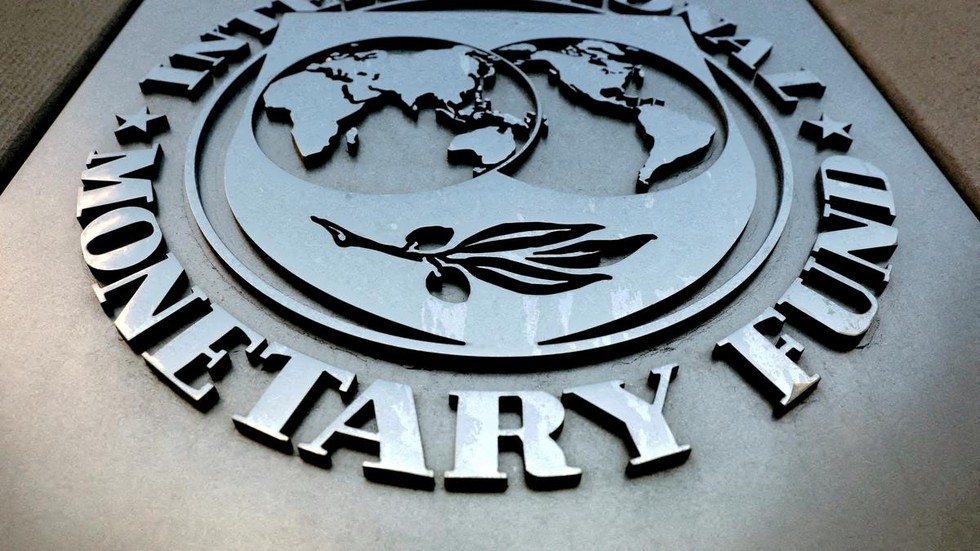
About IMF's Stand-By Arrangement:
- It provides short-term financial assistance to countries facing balance of payments problems. Historically, it has been the IMF lending instrument most used by advanced and emerging market countries.
- Eligibility: All member countries facing actual or potential external financing needs. Most often used by advanced and emerging market countries, but low-income countries sometimes use the SBA together with the Standby Credit Facility (SCF).
- Conditionality
- Countries’ economic policies must address the problems that led the country to seek funding.
- Disbursements conditional on the observance of quantitative performance criteria.
- Progress in implementing structural measures that are critical to achieving the objectives of the program is assessed in a holistic way, including via benchmarks.
- Duration of the assistance: Typically covers a period of 12–24 months, but not more than 36 months.
Key facts about IMF:
- It fosters economic growth and employment by providing temporary financial assistance to countries to help ease the balance of payments adjustment and technical assistance.
- Foundation: Formed in 1944 at the Bretton Woods Conference with the goal of reconstructing the international monetary system.
- Important Reports:World Economic Outlook and Global Financial Stability Report
- Headquarters: Washington, DC, USA.
Prelims Pointers
April 30, 2024

About TacticAI:
- It is an AI system that can provide experts with tactical insights, particularly on corner kicks (football), through predictive and generative AI. It can be used by football team managers as an assistant for tactics. It is developed by Google’s DeepMind.
- It has been incorporated both a predictive and generative component to allow coaches to effectively sample and explore alternative player setups for each corner kick and to select those with the highest predicted likelihood of success.
Why specifically corners?
- Corner kicks are apt for strategising by leveraging AI tools, primarily because they are moments when the game is effectively frozen — and always starts from the same kind of position at the corner of the pitch while giving players an immediate opportunity to score.
- Strategies for corners are usually also decided long before the players actually go on to the pitch, so that there is no confusion on match day.
- For every corner kick, AI can help- 1) understand what will happen and what happened; and 2) how to adjust tactics to make a particular outcome happen.
- What is a corner shot in football? A corner is awarded when the ball passes over the goal line after touching a player of the defending team.
April 29, 2024
Prelims Pointers
April 29, 2024
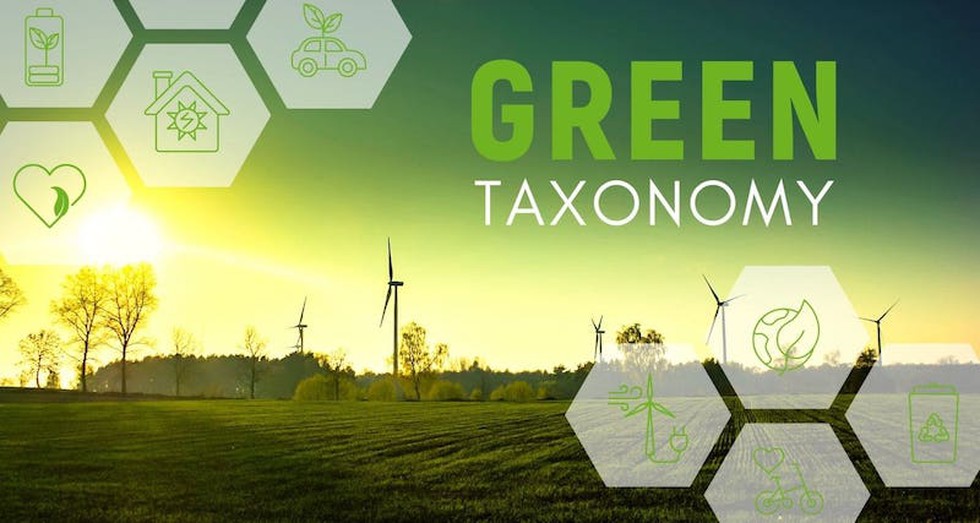
About Green Taxonomy:
- A green taxonomy is a framework for defining what can be called environmentally sustainable investments.
- It is a classification system that defines which economic activities and assets are “green” or environmentally sustainable.
- It is a useful instrument and has several complementary purposes:
- help prevent greenwashing;
- help investors make informed investment decisions; and
- channel investment toward sustainable or green economic activities and assets.
- Structurally, all taxonomies are similar. So far, they all include the goals of climate mitigation and adaptation and some also include other environmental objectives such as biodiversity conservation, for example.
- To be considered green, an activity must substantially contribute to at least one of the environmental objectives.
- Often, taxonomies also include “do no significant harm” criteria (i.e., an activity that substantially contributes to one environmental objective should not harm another environmental objective) and social safeguards (i.e., compliance with human rights).
- Some taxonomies only define what is green and others, such as the recently launched Indonesian taxonomy or the proposed Singaporean taxonomy, use a “traffic light” approach, where the economic activities are split into different categories (i.e. green, amber, or red) to classify their environmental sustainability.
What is Greenwashing?
- It is the process of conveying a false impression or misleading information about how a company’s products are environmentally sound.
- It involves making an unsubstantiated claim to deceive consumers into believing that a company’s products are environmentally friendly or have a greater positive environmental impact than they actually do.
- In addition, greenwashing may occur when a company attempts to emphasize sustainable aspects of a product to overshadow its involvement in environmentally damaging practices.
- Companies can also greenwash initiatives with vague claims that don't provide real data or scientific validation for the claims.
Prelims Pointers
April 29, 2024

About Critical Minerals Summit:
- It is organised by the Ministry of Mines, Government of India, in collaboration with the Shakti Sustainable Energy Foundation (Shakti), the Council on Energy, Environment and Water (CEEW) and the Indian Institute of Sustainable Development (IISD).
- It is designed to foster collaboration, share knowledge, and drive innovation in the field of critical mineral beneficiation and processing.
- It will bring together a diverse array of Indian and international stakeholders, including industry leaders, startups, government officials, scientists, academics and policy experts.
- It will address the increasing demand for Critical Raw Materials (CRMs) required for renewable energy systems and electric vehicles as part of India's strategic development goals.
- The Ministry of Mines has identified eight key minerals for focus at the summit, including Glauconite (Potash), Lithium – Rare Earth Elements (Laterite), Chromium, Platinum Group, Graphite, Tungsten associated with Graphite, Rare Earths (RE) and Vanadium associated with Graphite.
Key Facts about Critical Minerals:
- It is a metallic or non-metallic element that has two characteristics.
- It is essential for the functioning of our modern technologies, economies or national security and
- There is a risk that its supply chains could be disrupted.
- The 'criticality' of minerals changes with time as supply and society's needs shift.
- Applications:
- They are used to manufacture advanced technologies, including mobile phones, computers, fibre-optic cables, semiconductors, banknotes, and defence, aerospace and medical applications.
- Many are used in low-emission technologies, such as electric vehicles, wind turbines, solar panels, and rechargeable batteries.
- Some are also crucial for common products, such as stainless steel and electronics.
- Examples: antimony, beryllium, bismuth, cobalt, copper, gallium, germanium, lithium, vanadium, etc.
- Top Producers: Chile, Indonesia, Congo, China, Australia and South Africa.
- Critical Minerals in India:
- Government has released a list of 30 critical minerals for India.
- These minerals are Antimony, Beryllium, Bismuth, Cobalt, Copper, Gallium, Germanium, Graphite, Hafnium, Indium, Lithium, Molybdenum, Niobium, Nickel, PGE, Phosphorous, Potash, REE, Rhenium, Silicon, Strontium, Tantalum, Tellurium, Tin, Titanium, Tungsten, Vanadium, Zirconium, Selenium, and Cadmium.
Prelims Pointers
April 29, 2024
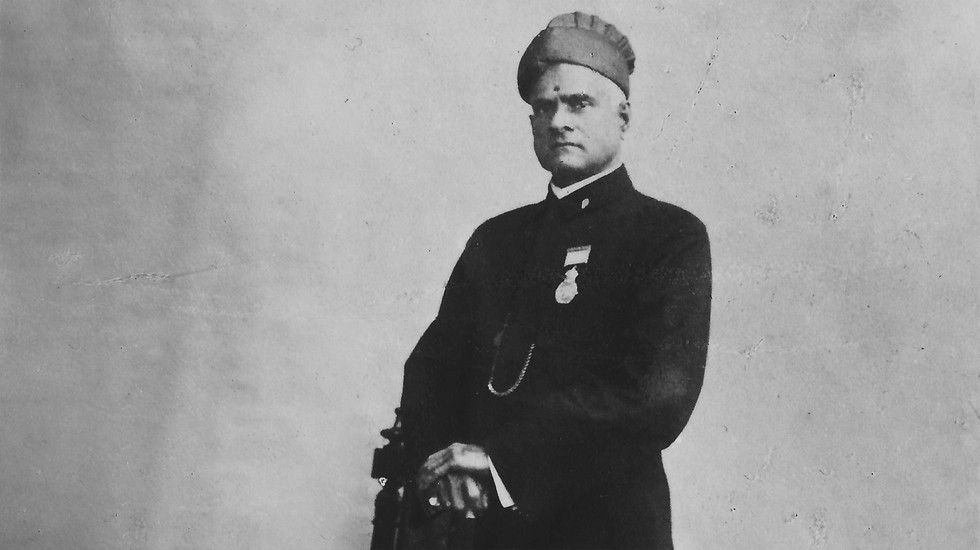
About Raja Ravi Varma:
- He was an Indian painter and artist. He is considered one of the greatest painters in the history of Indian art.
- He was born as Ravi Varma Koil Thampuran of Kilimanoor palace, in the erstwhile princely state of Travancore (Thiruvithankur) in Kerala.
- He is known for his amazing paintings, which revolve mainly around the Puranas (ancient mythological stories) and the great Indian epics, the Mahabharata and Ramayana.
- In addition to incidents in Hindu mythology, Varma painted many portraits of both Indians and British in India.
- His most famous works include Damayanti Talking to a Swan, Shakuntala Looking for Dushyanta, Nair Lady Adorning Her Hair and Shantanu and Matsyagandha.
- Features of his work:
- Before Raja Ravi Varma’s paintings, the paintings of Indian artists were greatly influenced by the Persian and Mughal schools.
- Varma was the first Indian to use Western techniques of perspective and composition and to adapt them to Indian subjects, styles and themes.
- His works are one of the best examples of the fusion of European academic art with a purely Indian sensibility and iconography.
- He was one of the first Indian artists to use oil paints and to master the art of lithographic reproduction of his work.
- He was notable for making affordable lithographs of his paintings available to the public, which greatly enhanced his reach and influence as a painter and public figure.
- His paintings often depicted mythological characters and Indian royalty in a realistic style, challenging traditional artistic norms.
- Recognitions:
- He received widespread acclaim after he won an award for an exhibition of his paintings at Vienna in 1873.
- His paintings were also sent to the World’s Columbian Exposition held in Chicago in 1893 and he was awarded two gold medals.
- In 1904, Viceroy Lord Curzon, on behalf of the King Emperor, bestowed upon Raja Ravi Varma the Kaisar-i-Hind Gold Medal. At this time, his name was mentioned as “Raja Ravi Varma” for the first time.
Prelims Pointers
April 29, 2024
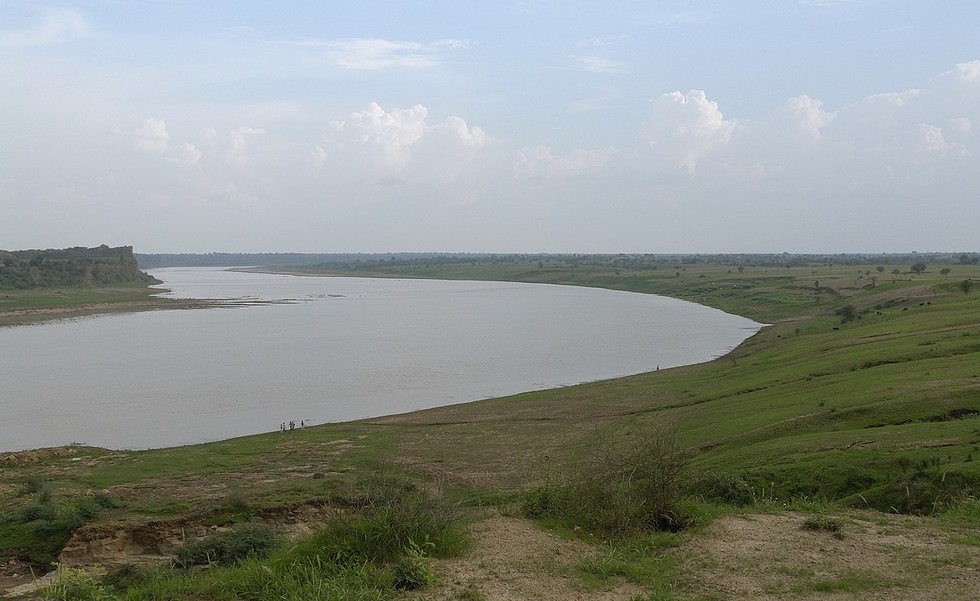
About Chambal River:
- It is an important river in the Malwa plateau and a principal tributary of the Yamuna River, thus forms part of the greater Gangetic drainage system. It flows through Madhya Pradesh, Rajasthan and Uttar Pradesh.
- Course:
- It rises in the Vindhya Range just south of Mhow, in western Madhya Pradesh.
- From its source, it flows north into southeastern Rajasthan.
- Turning northeast, it flows past Kota and along the Rajasthan–Madhya Pradesh border; shifting east-southeast, it forms a portion of the Uttar Pradesh–Madhya Pradesh border and flows through Uttar Pradesh to empty into the Yamuna.
- To its south, east and west, the basin is defined by the Vindhyan mountain ranges, while the north-western boundary is marked by the Aravalli range.
- Tributaries: The main tributaries of Chambal include the Banas and Mej rivers on the left and the Parbati, Kali Sindh and Shipra rivers on the right.
- Major Dams: Gandhi Sagar Dam, Rana Pratap Sagar Dam, and Jawahar Sagar Dam.
- National Chambal Sanctuary:
- It encapsulates a significant segment of the Chambal River, spanning from the Jawahar Sagar Dam in Rajasthan to the Chambal-Yamuna confluence in Uttar Pradesh.
- It was established with the imperative to restore ecological equilibrium to a crucial north Indian river system and to provide comprehensive protection to the highly endangered gharial.
Prelims Pointers
April 29, 2024
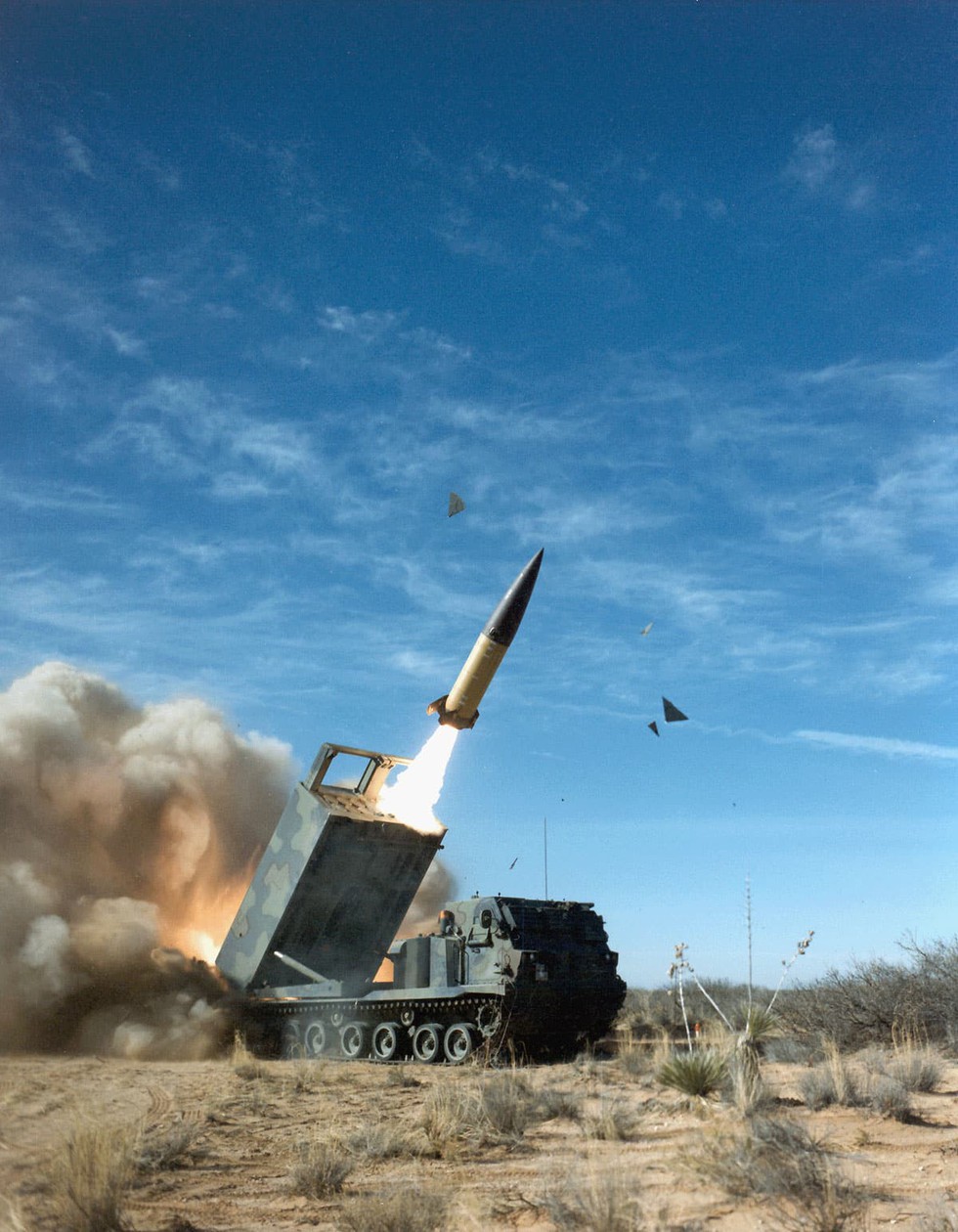
About Army Tactical Missile Systems (ATACMS):
- It is a conventional surface-to-surface artillery weapon system capable of striking targets well beyond the range of existing Army cannons, rockets and other missiles.
- It is manufactured by the US defense company Lockheed Martin.
- It is also designated M39 by the US Army, and its Department of Defence (DoD) designation isMGM-140. It first saw use during the 1991 Persian Gulf War.
- It’s known operators other than the US are Bahrain, Greece, South Korea, Taiwan, and the United Arab Emirates.
- Features:
- It is 24/7, all-weather, surface-to-surface, inertially guided ballistic missile.
- It is single-stage, solid propellant with a range of about 190 miles (305 km).
- They are fired from the High Mobility Artillery Rocket System (HIMARS) and the M270 Multiple Launch Rocket System (MLRS) The MLRS can fire 12 surface-to-surface missiles in less than a minute.
- It has the ability to carry cluster munitions, which destroy a targeted area by releasing hundreds of bomblets instead of a single warhead.
Prelims Pointers
April 29, 2024
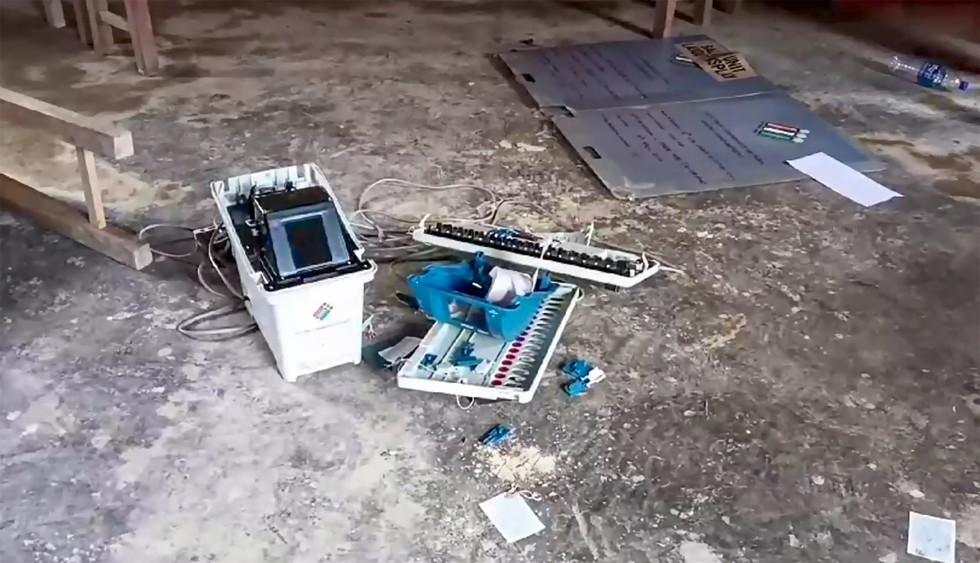
About Booth Capturing:
- Booth-capturing, defined in Section135A of the RPA, includes all or any of the following activities by any person or persons:
- Seizure of a polling station, affecting the conduct of elections;
- Taking possession of a polling station, allowing only his or their supporters to vote;
- Intimidating or threatening any elector and preventing him from going to the polling station;
- Seizure of a counting place affecting the counting of votes;
- Involvement of any person in government service in any of the above activities.
- It is punishable for a term of not less than one year, which may extend to three years for lay people and not less than three years, extending to five years for government servants.
- In such cases the Election Commission of India, based on the material facts, may
- Declare the poll at that polling station to be void and direct a fresh poll on a new date; or
- Countermand the election in the constituency in case booth capturing has taken place in a large number of polling stations, or if it has affected the counting of votes.
Prelims Pointers
April 29, 2024

About Opioids:
- These are a class of drugs that derive from or mimic, natural substances found in the opium poppy plant. They activate an area of nerve cells in the brain and body called opioid receptors that block pain signals between the brain and the body.
- They produce a variety of effects, including pain relief and euphoria and are highly addictive. Some common opioids include oxycodone, morphine, codeine, heroin and fentanyl.
- Opioid overdose: It can lead to death due to the effects of opioids on the part of the brain which regulates breathing.
- An opioid overdose can be identified by a combination of three signs and symptoms: pinpoint pupils, unconsciousness and difficulties with breathing.
What is Fentanyl?
- It is a potent synthetic opioid drug approved by the Food and Drug Administration for use as an analgesic (for pain relief) and anesthetic.
- It is approximately 100 times more potent than morphine and 50 times more potent than heroin as an analgesic.
Prelims Pointers
April 29, 2024
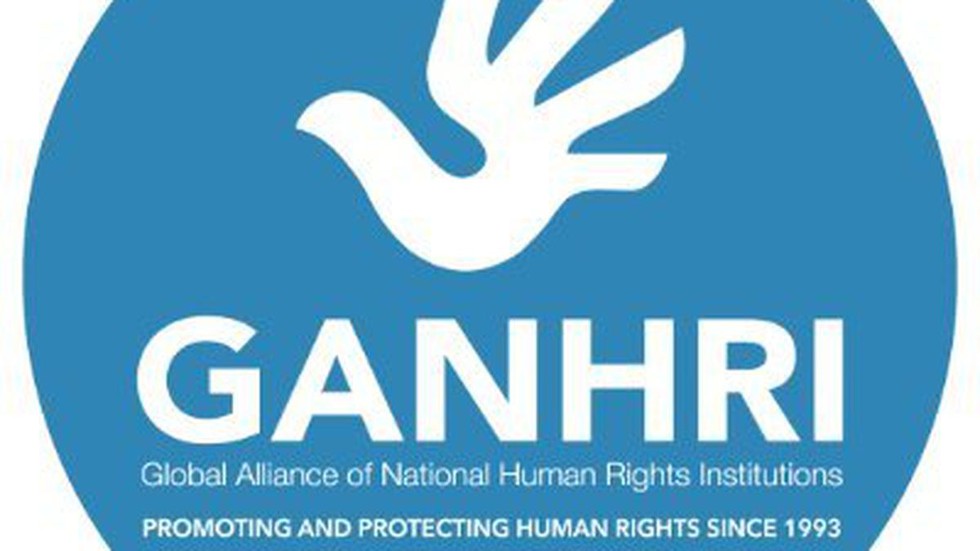
About Global Alliance of National Human Rights Institutions:
- It was established in 1993 as the International Coordinating Committee of National Institutions for the promotion and protection of human rights (ICC).
- It has been known as the Global Alliance of National Human Rights Institutions (GANHRI) since 2016 and is a member-based network organization that gathers NHRIs from all around the world.
- Members: It has 120 members: 88 “A” status accredited NHRIs and 32 “B” status accredited NHRIs.
Accreditation by the GANHRI:
- In a unique peer-review-based accreditation process, GANHRI ensures individual NHRIs’ compliance with internationally recognised standards – the Paris Principles– to ensure their independence, pluralism and accountability.
- The Paris Principles set out internationally agreed minimum standards that NHRIs must meet to be considered credible.
- The six principles require a country‘s human rights agency to be independent from the government in its structure, composition, decision-making and method of operation. The principles were adopted by the UN General Assembly in 1993.
- GANHRI, through the Sub-Committee on Accreditation (SCA), is responsible for reviewing and accrediting NHRIs in compliance with the Paris Principles.
- An NHRI is reviewed by the SCA when:
- It applies for initial accreditation
- It applies for re-accreditation every five years
- The circumstances of the NHRI change in any way that may affect its compliance with the Paris Principles.
- NHRIs that are assessed as complying with the Paris Principles are accredited with ‘A status’, while those that partially comply are accredited with ‘B status
Prelims Pointers
April 29, 2024
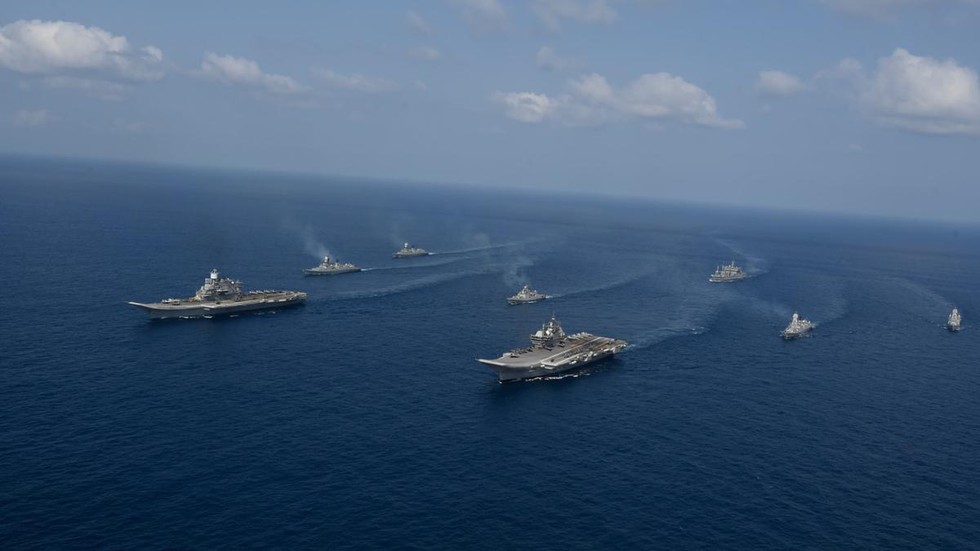
About INS Vikrant:
- It is the first ever indigenously designed and constructed aircraft carrier which will strengthen the country’s stand as a ‘Blue Water Navy’.
- It has been designed in-house by Indian Navy’s Warship Design Bureau and constructed by M/s Cochin Shipyard Limited.
- India also joined the elite group of nations – the US, Russia, France, the UK and China – who are capable of designing and constructing aircraft carriers.
- Also, with a displacement of 43,000 tonnes when fully loaded, INS Vikrant is set to be the seventh largest among the carriers or carrier classes in the world.
- What are its capabilities?
- It can operate an air wing of 30 aircraft comprising MiG-29K fighter jets, Kamov-31, MH-60R multi-role helicopters, in addition to indigenous Advanced Light Helicopters and Light Combat Aircraft (Navy).
- It uses the STOBAR (Short Take-Off but Arrested Recovery) method to launch and recover aircraft for which it is equipped with a ski- jump to launch aircraft and three ‘arrester wires’ for their recovery.
Prelims Pointers
April 29, 2024

About National Centre for Good Governance:
- It is an autonomous institute under the aegis of Department of Administrative Reforms and Public Grievances, Government of India.
- It has been set up to assist in bringing about governance reforms through studies, training, knowledge sharing and promotion of good ideas.
- It seeks to carry out policy relevant research and prepare case studies; curate training courses for civil servants from India and other developing countries.
- Background:
- It traces its origin to the National Institute of Administrative Research (NIAR). NIAR was set up in 1995 by the Lal Bahadur Shastri National Academy of Administration (LBSNAA) the Government of India's apex training Institute for higher civil services.
- NIAR was subsequently renamed with an expanded mandate, as National Centre for Good Governance, which was inaugurated on February 24th, 2014.
- Objectives:
- To function as a national repository on information on best practices, initiatives and methodologies that promote Good Governance, e-Governance etc.
- To advise on key issues in governance and develop synergy across various Ministries/ Departments of GoI and State Governments;
- Governing Body:
- The affairs of the NCGG are managed under the overall superintendence and direction of the Governing Body, which is headed by the Cabinet Secretary.
- It has Secretaries of 9 ministries/departments and 5 eminent persons viz. academicians, eminent administrators, specialists, eminent innovators, heads of reputed institutions as members.
- The Director General, who is the Chief Executive of NCGG acts as the Member–Secretary of the Governing Body.
- Head office: Its head office is at New Delhi and branch office at Mussoorie.
April 28, 2024
Prelims Pointers
April 28, 2024
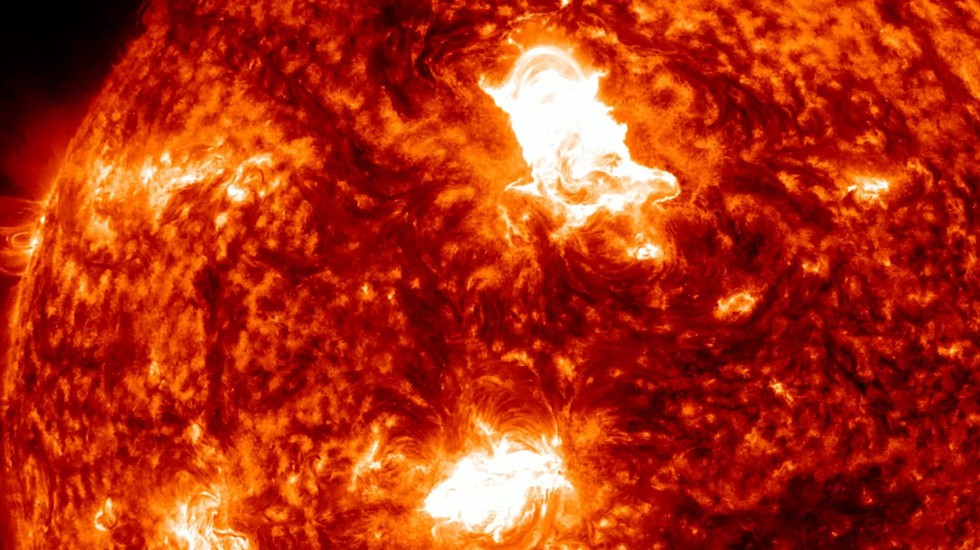
What are Solar Flares?
- A solar flare is an intense burst of radiation coming from the release of magnetic energy associated with sunspots. They are our solar system’s largest explosive events.
- They are seen as bright areas on the sun, and they can last from minutes to hours. In a matter of just a few minutes, they heat the material to many millions of degrees and produce a burst of radiation across the electromagnetic spectrum, including from radio waves to x-rays and gamma rays.
- Although solar flares can be visible in white light, they are often more readily noticed via their bright X-ray and ultraviolet emissions.
- Effect of Solar Flare on Earth:
- The intense radiation emitted during a solar flare can affect satellite communications, disrupt radio signals, and even pose a risk to astronauts in space.
- Additionally, the increased solar radiation can lead to geomagnetic storms, which may impact power grids and cause auroras (northern and southern lights) at lower latitudes.
About Sympathetic Solar Flare:
- It occurs when sunspots or filaments are invisibly linked by massive magnetic field loops that arch above the solar surface. When one flare detonates, the others follow in rapid succession.
- Sympathetic solar flares typically involve just two linked flares, ranging in intensity from minor outbursts to X-class flares, the most powerful class of solar flares.
- They are more likely to happen during or around the solar maximum, the most active phase of the Sun's approximately 11-year solar cycle.
Prelims Pointers
April 28, 2024
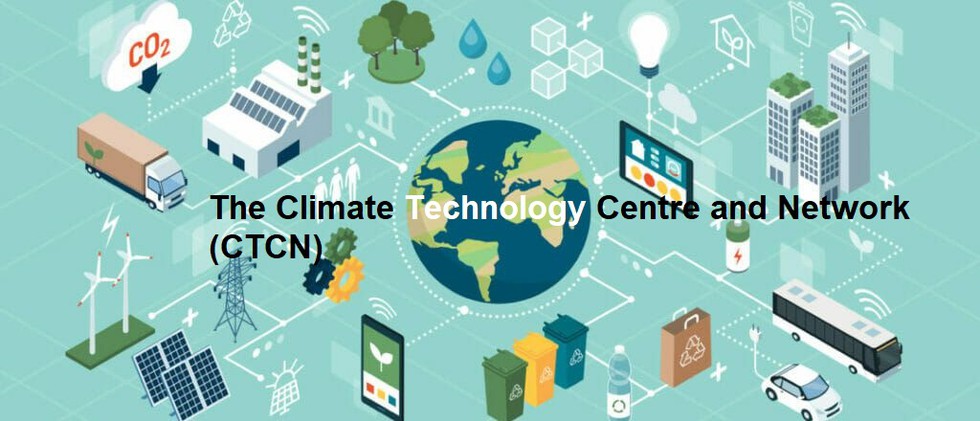
About Climate Technology Centre and Network (CTCN):
- It is the operational arm of the United Nations Framework Convention on Climate Change’s (UNFCCC) Climate Change Technology Mechanism.
- It is hosted by UN Environment (UNEP) in collaboration with the United Nations Industrial Development Organization (UNIDO) and with the support of 11 independent organizations having expertise in climate technologies.
- It was established to accelerate the development and transfer of environmentally sound technologies for low-carbon and climate resilient development at the request of developing countries.
- It provides technology solutions, capacity building, and advice on policy, legal, and regulatory frameworks tailored to the needs of individual countries by harnessing the expertise of a global network of technology companies and institutions.
- It is a demand-driven mechanism as its services are offered upon request by developing countries, and the volume and specific nature of activities ultimately depends on countries’ requirements and needs.
- It consists of two parts: a centre—a coordinating entity located in UN City Copenhagen—and a worldwide network of organizations that delivers CTCN services—both virtually and actually.
Prelims Pointers
April 28, 2024
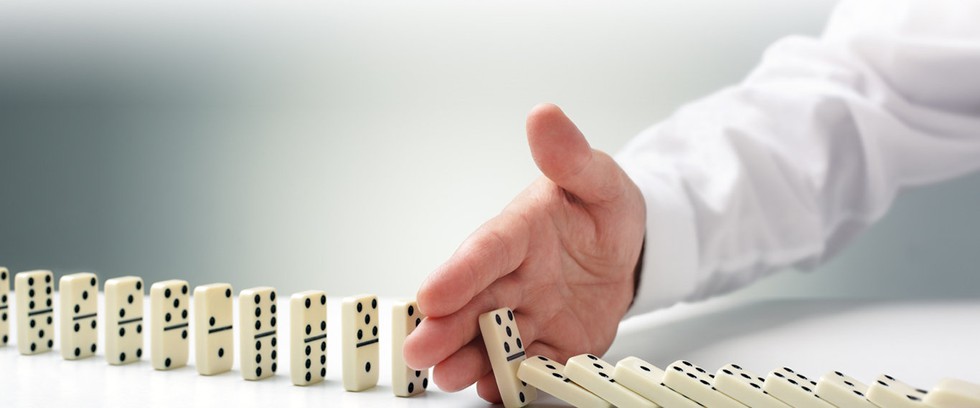
About Asset Reconstruction Companies (ARCs):
- It is a specialized financial institution that purchases the bad debts of a bank at a mutually agreed value and attempts to recover those debts or associated securities by itself.
- They are registered under the RBI and regulated under the Securitisation and Reconstruction of Financial Assets and Enforcement of Securities Interest Act, 2002 (SARFAESI Act, 2002). They function under the supervision and control of the RBI.
- As per the RBI, ARC performs the functions namely Acquisition of financial assets, Change or takeover of Management or Sale or Lease of Business of the Borrower, Rescheduling of Debts, Enforcement of Security Interest and Settlement of dues payable by the borrower.
- They take over a portion of the bank's debts, which qualify as Non-Performing Assets (NPAs). Therefore, ARCs are involved in the business of asset reconstruction, securitisation, or both. All the rights previously held by the lender (the bank) in regard to the debt are transferred to the ARC.
- The required funds to purchase such debts can be raised from Qualified Buyers.
- Qualified Buyers include Financial Institutions, Insurance companies, Banks, State Financial Corporations, State Industrial Development Corporations, trustee or ARCs registered under SARFAESI and Asset Management Companies registered under SEBI that invest on behalf of mutual funds, pension funds, FIIs, etc.
- The Qualified Buyers are the only persons from whom the ARC can raise funds.
Asset Reconstruction vs. Securitization:
- Asset Reconstruction refers to the acquisition of any right or interest of a bank or financial institution in loans, advances, debentures, bonds, guarantees, or any other credit facility extended by banks for the purpose of recovering the funds.
- These loans, advances, bonds, guarantees, and other credit facilities are collectively referred to as 'financial assistance.'
- Securitization, on the other hand, means the acquisition of financial assets through the issuance of security receipts to Qualified Buyers or other means. These security receipts represent an undivided interest in the financial assets.
Prelims Pointers
April 28, 2024
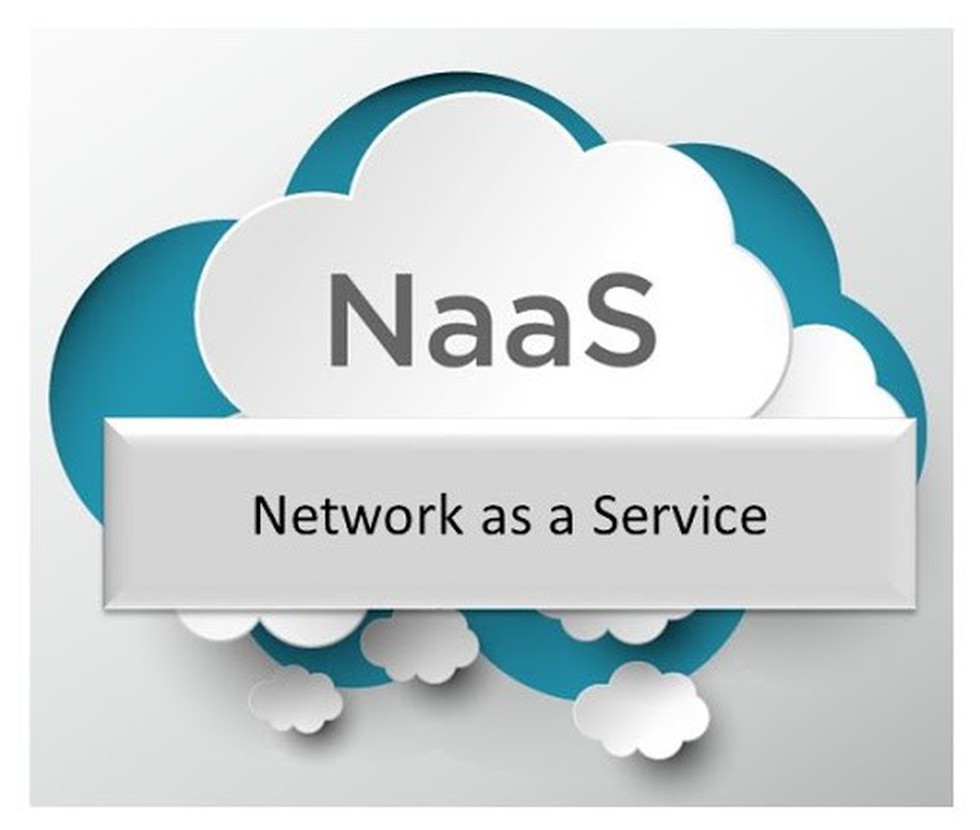
About Network as a Service (NaaS):
- It is a cloud service model in which customers rent networking services from a cloud vendor instead of setting up their own network infrastructure. It allows customers to operate their own networks without maintaining their own networking infrastructure.
- Like other cloud services, NaaS vendors run networking functions using software, essentially allowing companies to set up their own networks entirely without hardware. All they need is Internet connectivity.
- It is a flexible, scalable, and affordable option for organizations since it enables them to allocate network resources as needed.
- It can replace other networking systems that often require more work and provide less agility, such as virtual private networks (VPNs) and multiprotocol label switching (MPLS).
- In addition, by using NaaS, you can shift your networking system to your provider, who can also give you security services to keep your network environment safe. This means you don’t have to invest in on-premise firewalls and other security appliances.
- The provider may offer customers a range of different options, such as:
- Managed services, where the customer pays to use hardware on a subscription basis while the provider operates and maintains it
- Rented hardware, which is when the provider owns networking hardware and allows the customer to rent it from them. In this situation, customers have to install and operate the equipment themselves.
- Full NaaS, where the provider handles everything in relation to the networking hardware, including installing and operating it.
Prelims Pointers
April 28, 2024
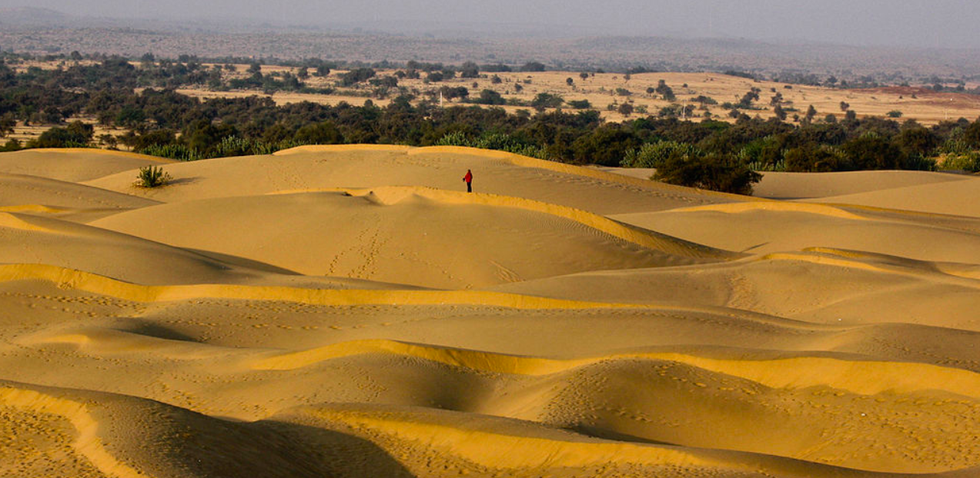
About Thar Desert:
- It is one of the largest subtropical deserts in the world. It is located partly in northwestern India, and partly in eastern Pakistan.
- It extends across the states of Rajasthan, Gujarat, and Haryana in India, and the provinces of Sindh and Punjab in Pakistan. The majority of the Thar desert is in India (15 percent lies in Pakistan).
- It is bordered by the irrigated Indus River plain to the west, the Punjab Plain to the north and northeast, the Aravalli Range to the southeast, and the Rann of Kachchh to the south.
- It is separated from the Greater Rann of Kutch to the west by the low-lying marshy lands of the Luni River.
- Climate:
- The desert features a hot and arid climate, with temperatures often reaching over 50 degrees Celsius during the day and dropping significantly at night.
- Rainfall is scarce, with the majority of the desert receiving less than 50mm of rain annually.
- Landscape:
- It is characterized by a vast and rugged landscape, with a variety of different terrains.
- It is known for its vast expanses of rolling dunes, which can reach heights of up to 200 meters.
- The desert is also characterized by rocky outcroppings, which are clusters of large rocks that rise from the desert floor.
- It is also home to large salt flats, which are areas of flat land covered with a layer of salt.
- Large, flat plains, which are covered with a thin layer of soil and vegetation, are also found here.
- Mineral Resource:
- It is rich in a variety of minerals, including one of the largest coal reserves in India.
- It is also a major source of gypsum, Limestone, salt, Bauxite, silica, etc.
Prelims Pointers
April 28, 2024
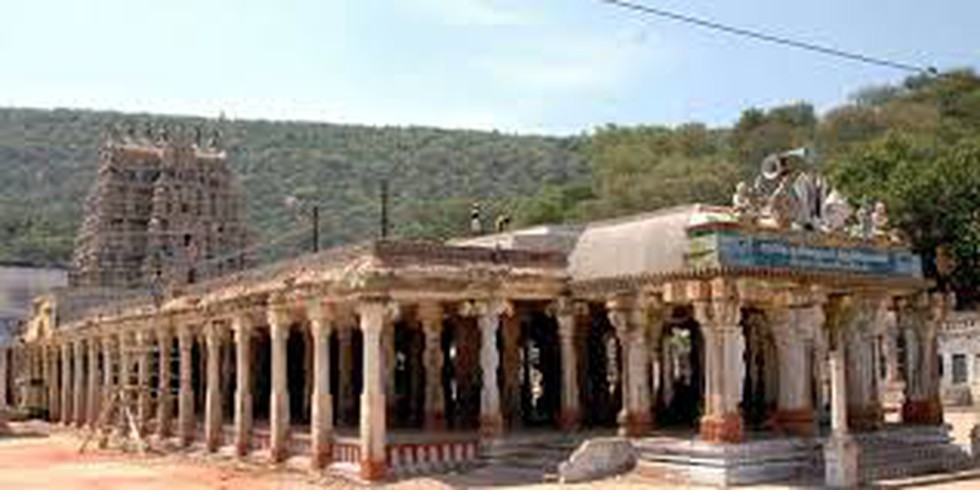
About Alagar Temple:
- It is also known with the name of Azhagar Kovil is one of the prominent temples situated at the foothills of Alagar hills in the state of Tamil Nadu.
- It is dedicated to Lord Vishnu and is known for its intricate sculpting and mandapams. It was mentioned in epic such as Silappathikaram.
- Alvars like Thirumangai Alvar, Peri Alvar, Nammalvar, Bhoothathalvar, Peyalwar, Andal have also mentioned the glorious history of shrine in their songs.
- There are also inscriptions dating back to King Ashoka rule. It is said that great Jain monk Ajjanandi had resided here along with his disciples. It had a prominent place during the Pandyan reign.
- It was during the rule of King Jatavarman Sundara Pandyan (1251-1270 A.D) vimana of the temple’s sanctum sanctorum was beautified with gold plates.
- The massive tower which is seen at the entrance of the temple was also built during the reign of Pandyan kingdom.
- King Thirumalai Naickar of Nayaka dynasty also added many artistic features to this temple during his reign.
- The kalyan mandapam of the temple, especially showcase Nayaka art.
Prelims Pointers
April 28, 2024
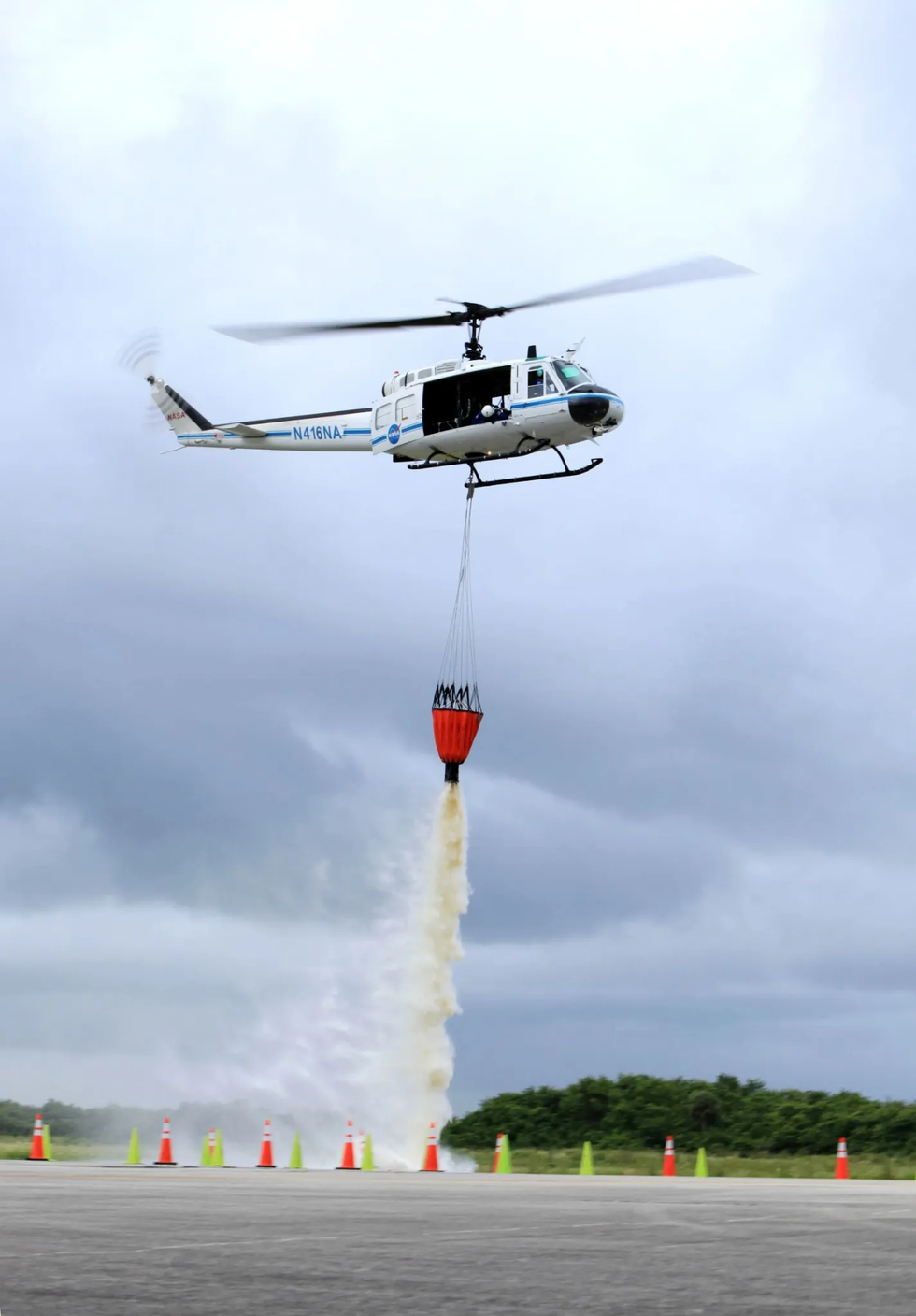
About Bambi Bucket:
- It is also known as helicopter bucket or a It is a specialised aerial firefighting tool which has been in use since the 1980s.
- It is suspended by cable under a chopper, and which can be filled by lowering into a river or pond before being flown above a fire and discharged aerially by opening a valve at the bottom of the bucket. It is essentially a lightweight collapsible container that releases water from underneath a helicopter to targeted areas.
- One of its key features is that it can be quickly and easily filled. The bucket can be filled from various sources, including lakes and swimming pools, which allows firefighters to swiftly refill it and return to the target area.
- Features: It can be stored within the helicopter until development and it discharges a solid column of water, “resulting in a more accurate and effective water dump, less evaporation on the descent and greater impact force.
- It is especially helpful in fighting wildfires that are difficult or impossible to reach from the ground.
Prelims Pointers
April 28, 2024
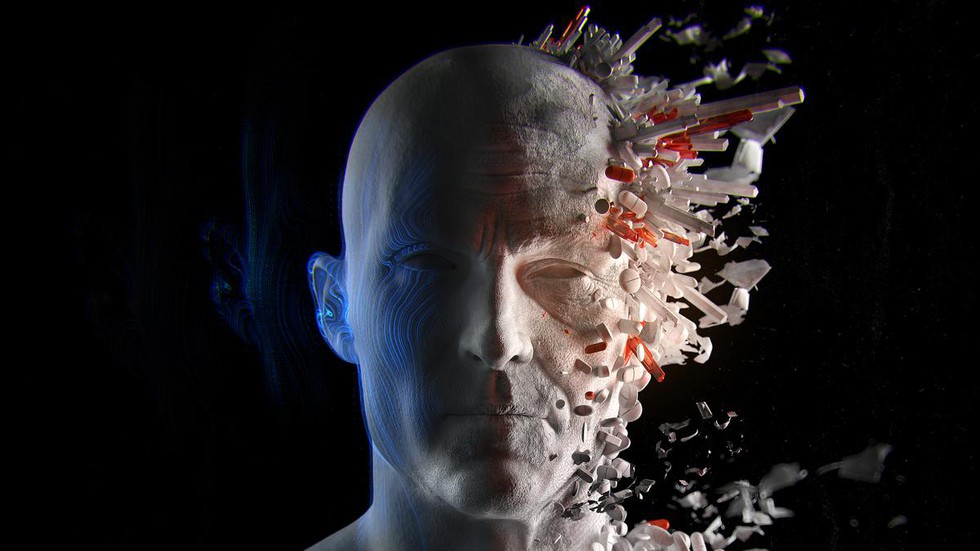
About Biohacking:
- It is a term used to describe various tips and tricks for enhancing the body’s ability to function at peak performance—and maybe even extend one’s lifespan.
- It includes the practice of employing methods drawn from fields like biology, genetics, neuroscience and nutrition to enhance physical or mental performance, improve overall health and well-being, or achieve a specific health outcome.
- Most types of biohacking generally fall into one of the following categories below:
- Lifestyle: It focuses on making positive health and behavior choices. It is probably the most accessible way most people can start experiencing biohacking, as it includes factors like dietary shifts, breathwork, meditation and exercise.
- Molecular: It involves the use of natural and synthetic molecules that can help shift one’s biology. Taking supplements would fall into this biohacking category.
- Biologics: These are biological products that are meant to improve or enhance biology. They could be cells, or they could be small little information packets like exosomes, which are basically biological bundles of DNA, mRNA proteins and growth factors. Biologics typically need to be ingested, injected (such as stem cells) or delivered intravenously (i.e. by IV transfusion).
- Technology: It includes devices like wearables (such as smartwatches) and diagnostics (such as blood sugar monitors). In such cases, biohacking uses technology to gather data about the body and its functioning so an individual can use that information to adjust their health as they strive for improved performance.
- There are currently no laws in India that specifically address biohacking.
Prelims Pointers
April 28, 2024

About Chakisaurus nekul:
- Its name derived from Chaki, which is a word from the Aonikenk language, of the indigenous Tehuelche people, which means "old guanaco", a reference to a medium-sized herbivore mammal found in the region. Nekul means "fast" or "agile" in the Mapudungún language, of the local Mapuche people.
- It was a fast runner and lived about 90 million years ago in the Late Cretaceous period in present day Patagonia.
- It was found in the Pueblo Blanco Natural Reserve, in the southern province of Río Negro, an area rich in fossils where many mammals, turtles and fish have been found along with other species of dinosaur.
- This new species was a bipedal herbivore that among its most important characteristics had a tail that, unlike other dinosaurs, which was horizontal, had a downward curvature.
Prelims Pointers
April 28, 2024

About Mephedrone:
- It also known as 4-methylmethcathinone, 4-MMC and 4-methylephedrone. It is a synthetic stimulant drug of the amphetamine and cathinone classes.
- Other names: drone, M-CAT, white magic, ‘meow meow’, and bubble.
- It has a role as a xenobiotic and an environmental contaminant. It has been linked to a range of adverse effects on both physical and mental health.
- Users commonly report increased alertness, euphoria and enhanced sociability, but these positive effects come at a cost.
- Health impacts:
- Anxiety, paranoia, nausea and insomnia are among the negative side effects experienced by individuals under the influence of this synthetic stimulant.
- Prolonged use has been associated with more severe consequences, including cardiovascular issues, hallucinations and even instances of aggressive behaviour.
- The drug's impact on mental health raises concerns about its potential for addiction and long-term psychological harm.
- It is banned in India under the Narcotic Drugs and Psychotropic Substances Act, 1985.
April 27, 2024
Prelims Pointers
April 27, 2024

About Lending Service Providers (LSPs):
- They are engaged by the Regulated Entities (REs) (banks or NBFCs) to carry out some functions of RE in connection with lenders’ functions on digital platforms. They offer their services to REs for a fee or commission.
- RBI defines an LSP as an agent of an RE that carries out one or more functions of the lender, includingcustomer acquisition, underwriting support, pricing support, disbursement, servicing, monitoring, collection, and loan recovery on behalf of the RE.
- In simple terms, LSPs are loan aggregatorswhich provide loans from their partner REs. In some cases, a RE can also act as an LSP.
- They are technology-centric entities which have the client reach and are thus capable of offering a marketplace for both lenders and borrowers.
- LSPs entail aggregation of loan offers from multiple lenders on an electronic platform, which enables the borrowers to compare and choose the best available option to avail a loan from one of the available lenders.
Prelims Pointers
April 27, 2024
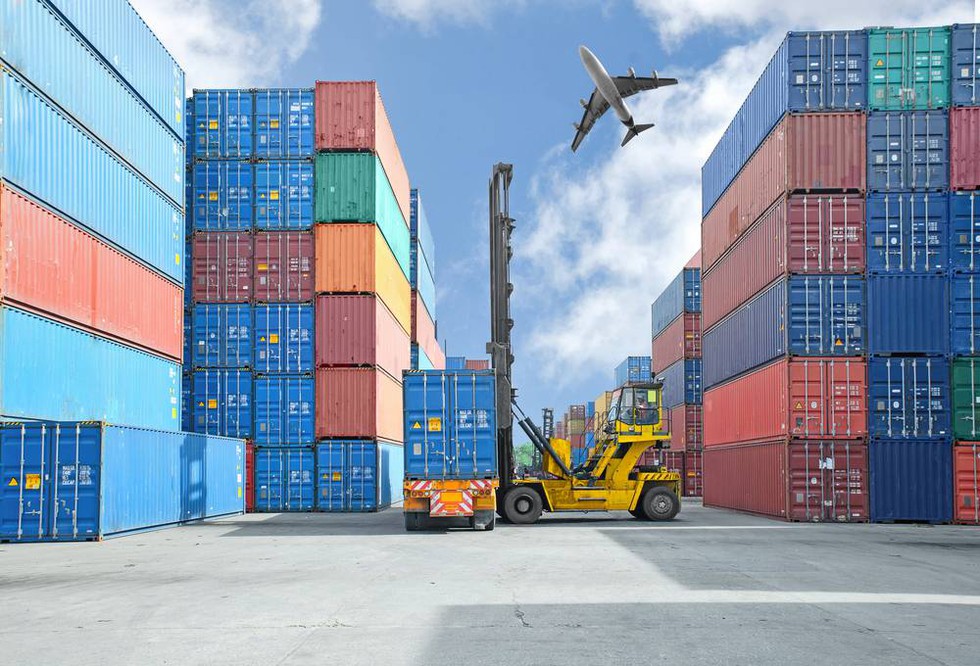
About Authorised Economic Operator (AEO) Programme:
- An AEO is a business entity involved in the international movement of goods requiring compliance with provisions of the national customs law.
- It is approved by or on behalf of the national administration in compliance with the World Customs Organization (WCO).
- The WCO in June, 2005, with a view to secure the international supply chain, adopted the SAFE Framework of Standards (WCO SAFE FoS). It is the basis of the Indian AEO programme.
- AEO is one of the three pillars on which the SAFE FoS is formed. It helps to build a closer partnership between the customs department and the trade industry.
- What is the AEO programme?
- It was introduced in India by the Central Board of Indirect Taxes and Customs (CBIC) in 2011. It is a voluntary programme administered by the CBIC.
- It seeks to provide benefits in the form of simplified customs procedures and faster customs clearances to those business entities that offer a high degree of security guarantees regarding their role in the supply chain.
- Thus, an entity with an AEO status can be considered a reliable trading partner and a secure trader.
- This segmentation approach enables customs resources to focus on less-non-compliant or risky businesses for control.
- Benefits:
- Direct port delivery in the case of import and direct port entry in case of export;
- Small and medium scale entities would be given special focus. It must be noted that any entity handling up to 25 import and export documents annually can become part of the AEO programme;
- Easy and fast disbursal of the drawback amount;
- Easy and fast disbursal of refunds and adjudications;
- Paperless declaration with no supporting documents;
- Site inspection or examination possible on request;
- Recognition by partner Government agencies and other stake holders.
- Who can apply for AEO Status?
- Business entities who are involved in the international supply chain that undertakes customs-related activity in India can apply for AEO status. The business entity can apply for AEO status irrespective of its size.
- Some of the examples of business entities that can apply for AEO status are importers, exporters, Custom House Agent (CHA), Custodians or Terminal Operators, etc.
Prelims Pointers
April 27, 2024
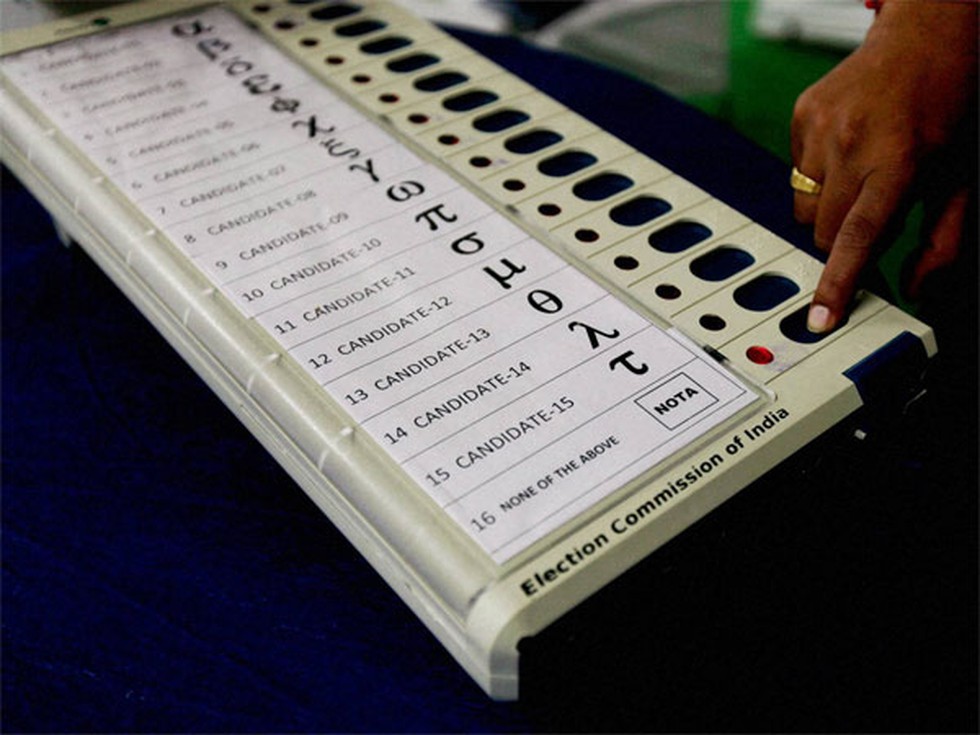
About NOTA (None of the Above):
- It is a ballot option that a voter can choose to apply for instead of giving their vote to any of the contesting candidates.
- It empowers the electors to express their negative opinions and a lack of support for the contenders. It gives them the right to reject while maintaining the secrecy of their decision.
- When was it first used?
- It was used for the first time in the 2013 Assembly elections in five states-Chhattisgarh, Mizoram, Rajasthan, Delhi and Madhya Pradesh-and later in the 2014 General Elections.
- It was introduced into the electoral process following the 2013 Supreme Court directive in the PUCL versus Union of India case.
- How does a person cast a NOTA vote?
- The NOTA option in the Electronic Voting Machines (EVMs) is given at the bottom of the candidates' list.
- Earlier, in order to cast a negative ballot, a voter had to inform the presiding officer at the polling booth. Now the voter has just to press the NOTA option on the EVM.
- Does NOTA Vote Count?
- The Election Commission clarified that votes cast as NOTA are counted, but are considered ‘invalid votes’.
- Even if NOTA votes get the most number of votes in a constituency, the next candidate with the second-most number of votes is declared the winner.
- Therefore, votes made to NOTA will not change the outcome of the election.
Prelims Pointers
April 27, 2024
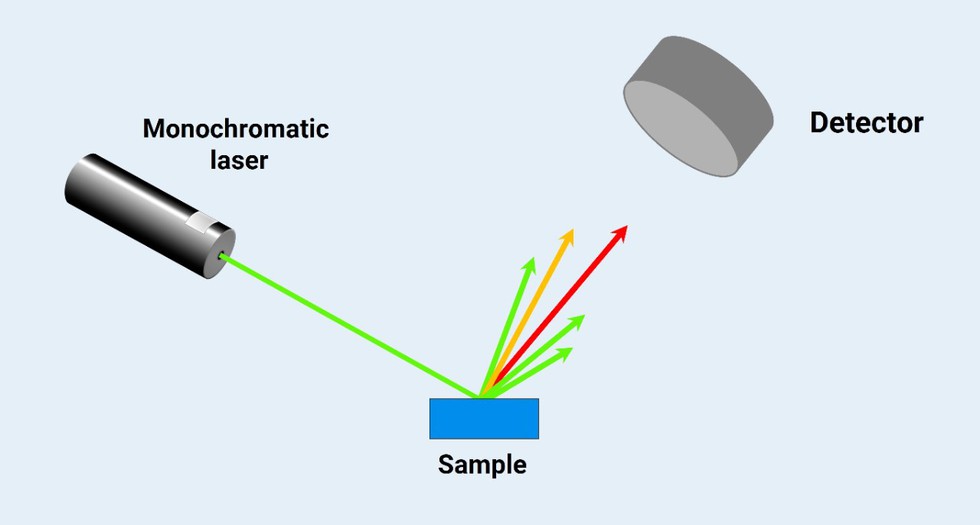
About Raman Spectroscopy:
- It is an analytical technique where scattered light is used to measure the vibrational energy modes of a sample.
- It involves illuminating a substance with a laser and analyzing the light that is scattered off the surface of the substance. It is based on the interaction of light with the chemical bonds within a material.
- It can provide both chemical and structural information, as well as the identification of substances through their characteristic Raman ‘fingerprint’.
- Raman spectroscopy extracts this information through the detection of Raman scattering from the sample.
- In 1928, Sir C.V. Raman introduced the "Raman effect," for which he was given the Nobel Prize in Physics in 1930.
- What is the Raman Effect?
- It is a change in the wavelength of light that occurs when a light beam is deflected by molecules.
- When a beam of light traverses a dust-free, transparent sample of a chemical compound, most of the scattered light is at the same wavelength (or color) as the laser source and does not provide useful information; this is called Rayleigh Scatter.
- However, a small amount of light (typically 0.0000001%) is scattered at different wavelengths (or colors), which depend on the chemical structure of the analyte; this is called Raman Scatter.
Prelims Pointers
April 27, 2024
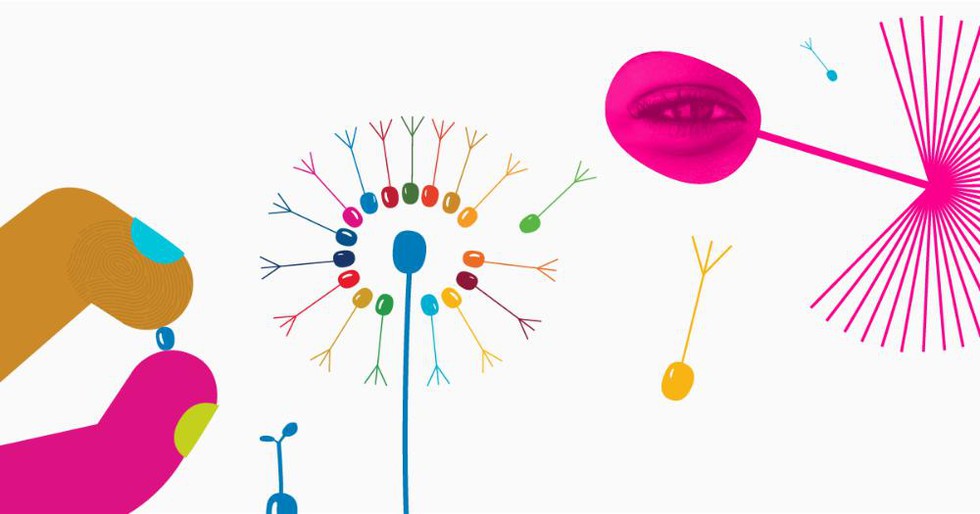
About World Intellectual Property Day:
- It is celebrated every year on April 26. The day aims to raise awareness about Intellectual Property (IP) rights and its role in encouraging innovation and creativity to make the world a better place.
- The day was established in 2000 by the World Intellectual Property Organisation (WIPO).
- Official theme for World Intellectual Property Day 2024: ‘IP and the SDGs: Building Our Common Future with Innovation and Creativity’.
- History:
- In 1883, the Paris Convention for the Protection of Industrial Property was signed, which further established protection for intellectual properties. It was aimed at protecting inventions, trademarks and industrial designs.
- In 1970, the Convention establishing the World Intellectual Property Organisation entered into force, creating WIPO. It is a specialised agency of the United Nations.
- WIPO is a self-funding agency of the United Nations, with 193 member states that works to promote the protection and advancement of intellectual property worldwide.
Patenting Trends in India Report:
- It was released by Nasscom on World Intellectual Property Day.
- Mirroring global trends, in FY2023, India witnessed 83,000 patents being filed, marking an annual growth rate of 24.6%, the highest in the last two decades.
- The number of patents granted also witnessed significant growth, rising over 2X between FY2019 and FY2023.
- The share of patents filed by residents of India has doubled over the last decade, from 33.6 percent of the total filings in the fiscal year 2019 to over 50 percent by the fiscal year 2023.
- Maximum patent applications were in the field of healthcare, essentially around medical imaging, diagnosing, report generation and testing.
- Other areas that are important for filing a patent are Automation/Software Development and Retail/e-commerce.
- Artificial Intelligence saw the maximum patents filed in the areas of image processing, Natural Language Processing and Predictive modelling, while Gen AI, Medical Data Processing and Cognitive computing are the key emerging areas.
Prelims Pointers
April 27, 2024

About Liquid Nitrogen:
- It is an inert, colorless, odorless, noncorrosive, nonflammable and extremely cold element.
- It is a cryogenic liquid (Cryogenic liquids are liquefied gases that have a normal boiling point below –130°F (–90°C). Liquid nitrogen has a boiling point of –320°F (–196°C).
- Health impacts:
- Liquid nitrogen can scorch the organ or part of the body it contacts, making it appear like frost bites.
- It can damage the lips, tongue, throat, lungs and stomach. It may cause lesions or burn tissues.
- If it reaches the stomach, the organ could get perforated. In the lungs, it could produce CO2 and the person could become unconscious.
- Applications:
- It is used to cool and freeze food rapidly. In food production and industrial processes, a cooling tray filled with liquid nitrogen is used to rapidly cool materials or equipment by immersing the product in nitrogen.
- In the wellness and sports industry, cryosaunas with liquid nitrogen vapor are used for
- Liquid nitrogen test chambers are used in technology and material sciences to test the performance and durability of materials and devices at extremely low temperatures.
Prelims Pointers
April 27, 2024
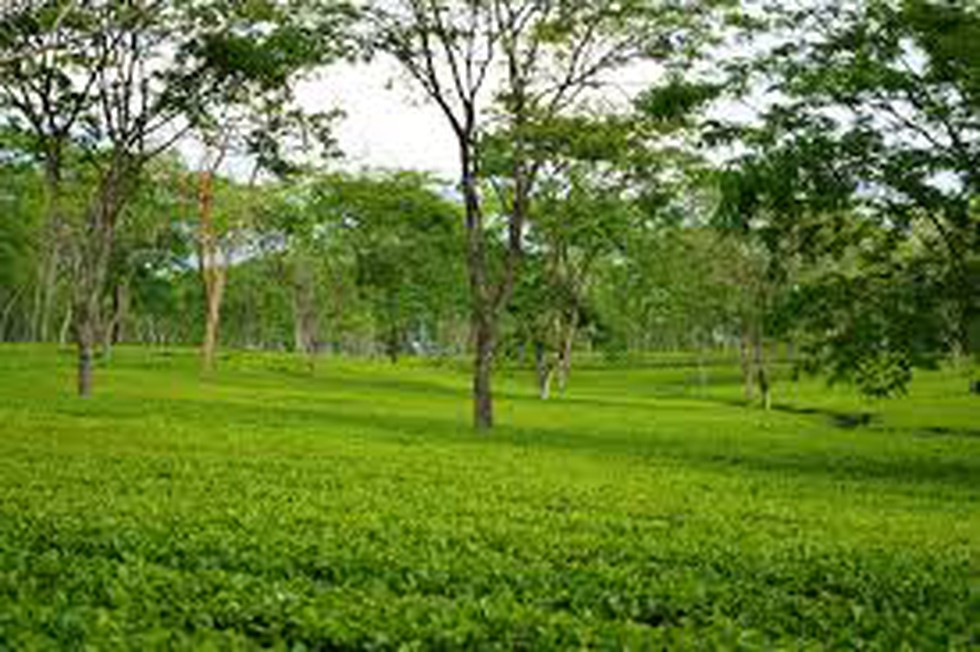
About Dooars:
- These are alluvial floodplains in northeastern India that lie south of the outer foothills of the Himalayas and Brahmaputra plain.
- It is about 30 km wide and stretches over about 350 km from the Teesta River in West Bengal to the Dhansiri River in Assam. It forms the gateway to Bhutan, Sikkim and Eastern Nepal.
- It is divided by the Sankosh River into Eastern and Western Dooars, consisting of an area of 880 km2. The Western Dooars are also known as the Bengal Dooars and the Eastern Dooars also as the Assam Dooars.
- Significance of Dooars:
- The deep, well drained and fertile soil rich in humus of the Dooars has been used for the developed for the tea plantations.
Prelims Pointers
April 27, 2024
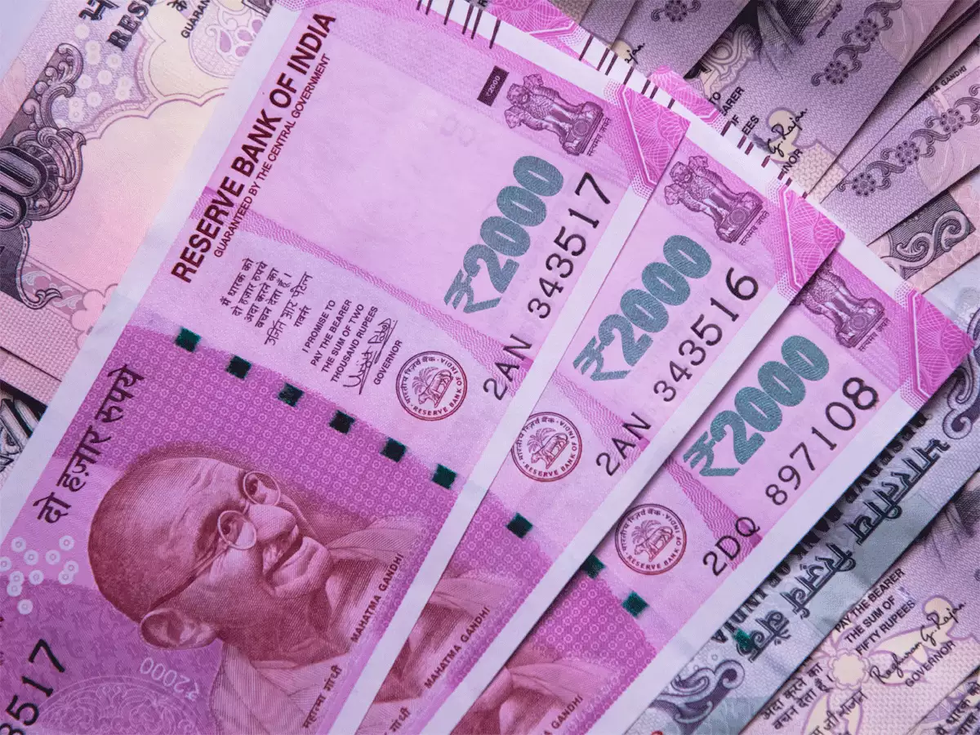
About Central Pay Commission:
- It is a body set up by the Central government that reviews and recommends changes to the salary structure of the employees. It also reviews the bonuses, allowances and other benefits of the employees.
- It recommends changes for central government employees and pensioners as well as the defence forces.
- They are usually constituted every 10 years and the first pay commission was set up in 1946. Since Independence, a total of seven pay commissions have been formed.
- The latest pay commission was set up in 2014 and its recommendations came into effect in 2016.
- It is not mandatory for the government to accept the recommendations of the pay commission and it may choose to accept or reject the recommendations.
- The Department of Expenditure under the Ministry of Finance is responsible for the implementation of the recommendations of the Central Pay Commission.
Prelims Pointers
April 27, 2024
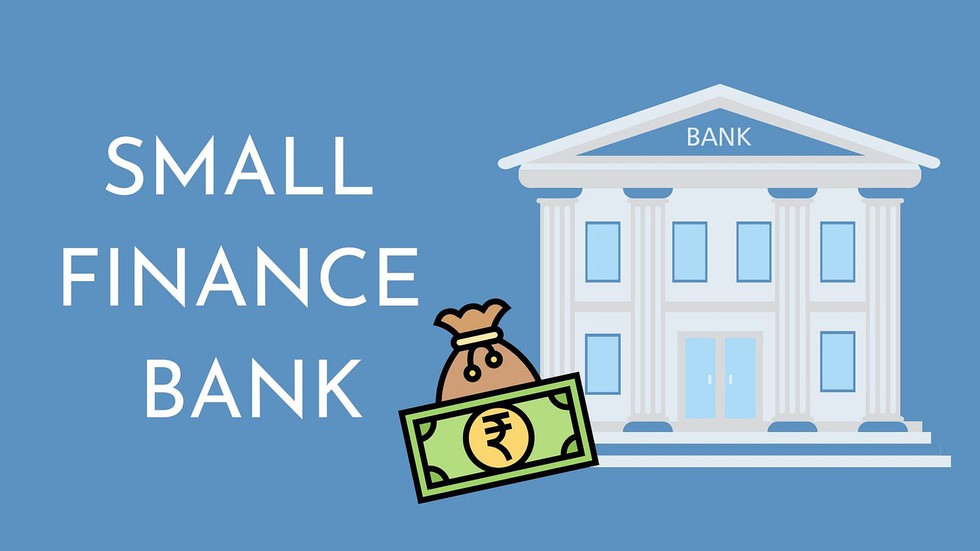
About Small Finance Banks (SFBs):
- They are specialized banks that are licensed by RBI to provide financial services and products to low-income individuals and underserved communities, including microfinance and micro-enterprise services, as well as other basic banking services.
- They are granted the scheduled bank status after being operational and are deemed suitable under section 42 of the RBI Act, 1934.
- Objectives:
- To provide financial inclusion to these segments of the population who are often excluded from the traditional banking system.
- To provide financial products such as small loans, savings, insurance and other basic banking services.
- Eligibility:
- Resident individuals/professionals (Indian citizens), singly or jointly, each having at least 10 years of experience in banking and finance at a senior level are eligible for SFBs.
- Companies and Societies in the private sector, that is owned and controlled by residents and having successful track record of running their businesses for at least a period of five years.
- Existing Non-Banking Finance Companies (NBFCs), Micro Finance Institutions (MFIs), and Local Area Banks (LABs) in the private sector, that are controlled by residents and having successful track record of running their businesses for at least a period of five years, can also opt for conversion into small finance banks after complying with all legal and regulatory requirements of various authorities.
- Other norms to be followed by SFBs:
- Capital to Risk Weighted Assets Ratio: They are required to maintain a minimum CRAR of 15%.
- Priority Sector Lending: They are required to extend 75% of their Adjusted Net Bank Credit to Priority Sector Lending.
- They are required to open at least 25% of their total branches in unbanked rural areas.
- Required paid up capital: The minimum paid-up voting equity capital for small finance banks shall be 200 crore.
- Regulation: They are registered as public limited companies under the Companies Act, 2013and governed by Banking Regulations Act, 1949; RBI Act, 1934 and other relevant Statutes and Directives from time to time.
Prelims Pointers
April 27, 2024

About Bima Vistaar:
- It is an ambitious all-in-one affordable mass product aimed at the rural areas of the India which is priced at Rs 1,500 per policy.
- It is designed to provide a basic social safety net cover with combined features of life, health, personal accident and property insurances.
- The sum assured for life, personal accident and property covers is Rs 2 lakh each, while the health cover, known as hospi cash, offers a sum assured of Rs 500 for 10 days, with a maximum amount of Rs 5,000 available without producing bills or documents.
- Agents selling Bima Vistaar policies stand to earn a commission of 10 per cent, incentivising wider distribution and adoption of the product.
- These products will be distributed by Bima Vahak. Initially, every gram sabha will have at least one Bima Vahak, who will visit every house in their area and convince them about the product.
- Significance: It is considered as a mass product for increasing insurance penetration in the country, it is expected that unlike micro insurance products, it will generate a large sales volume.

